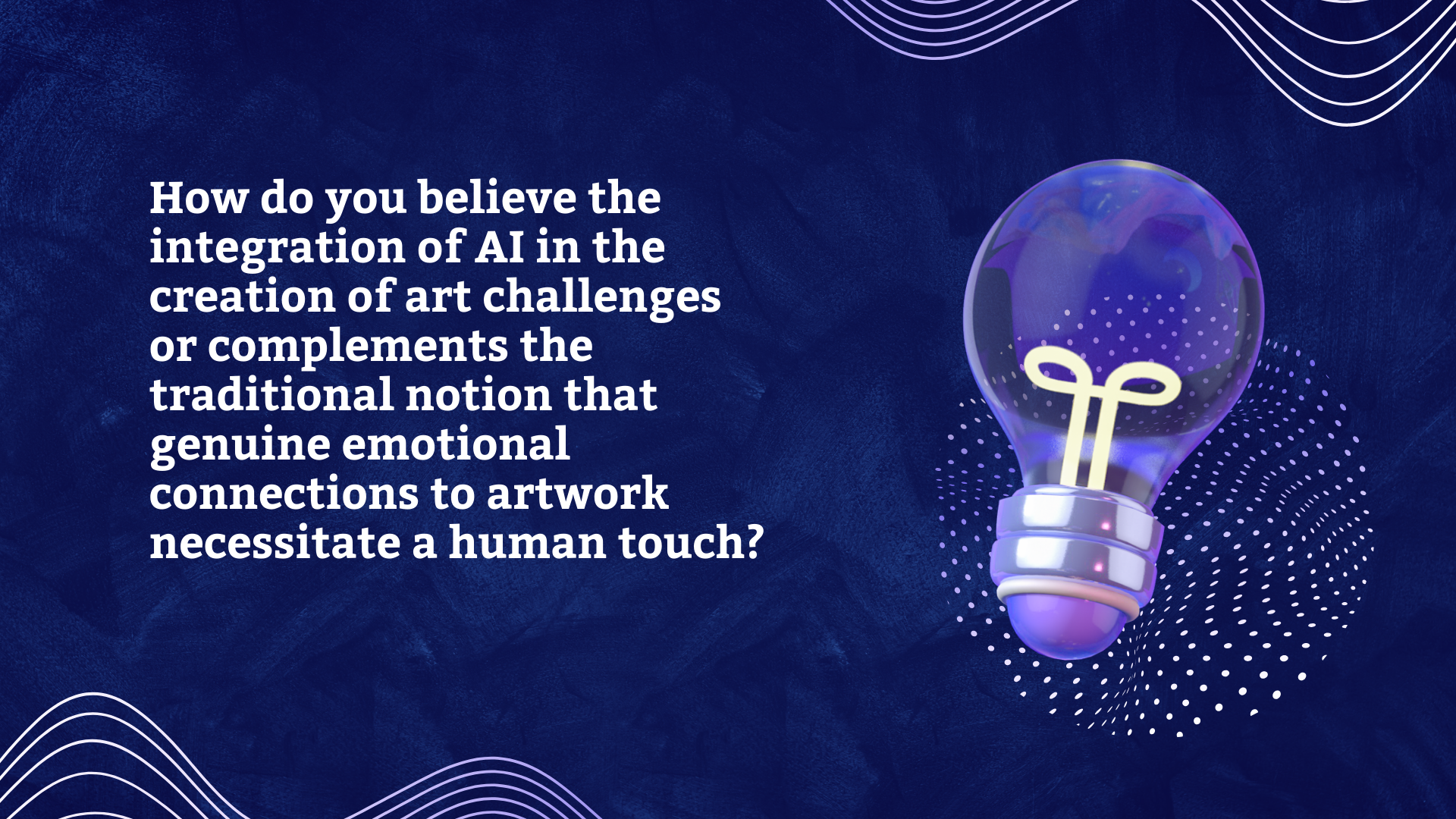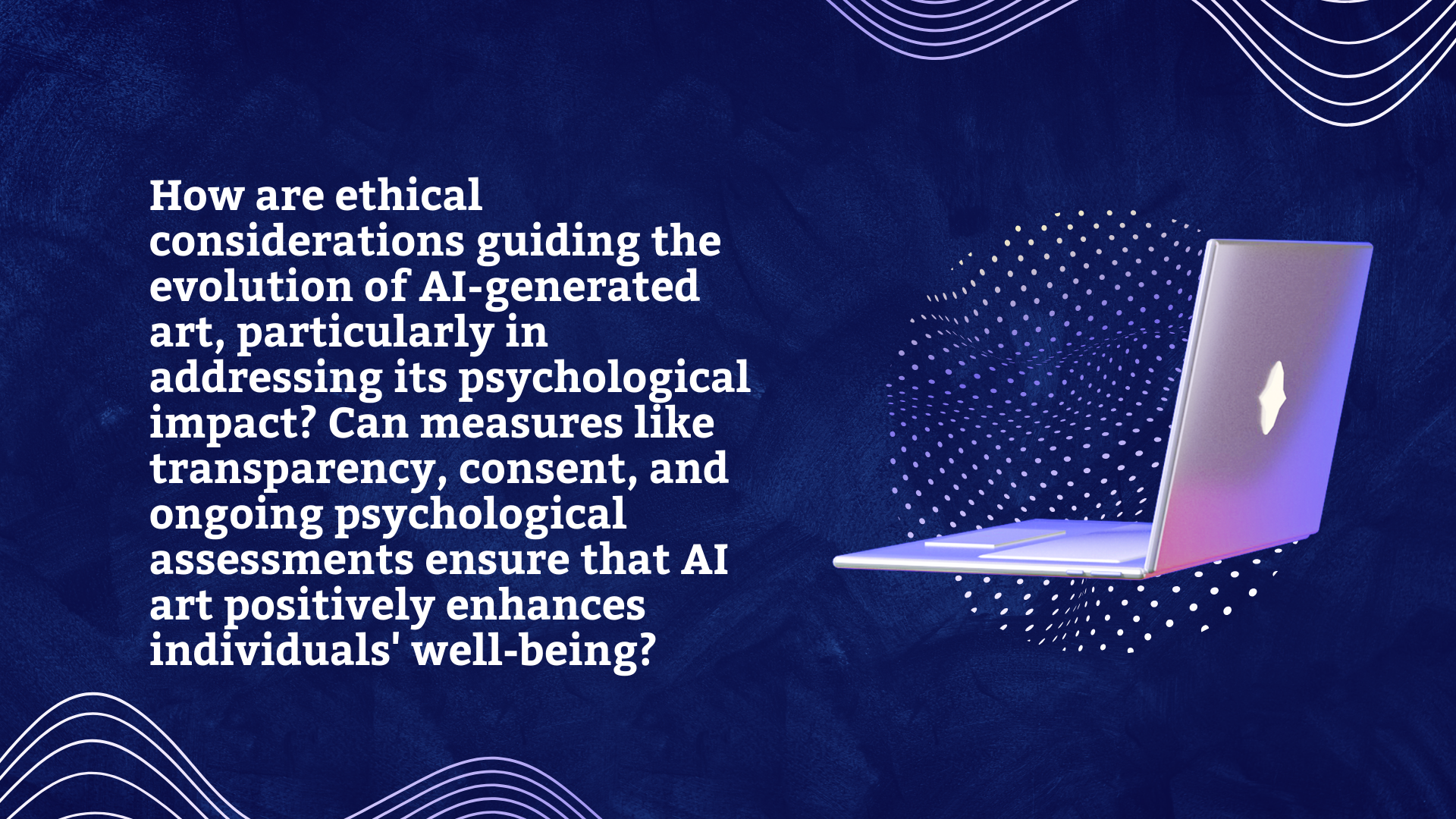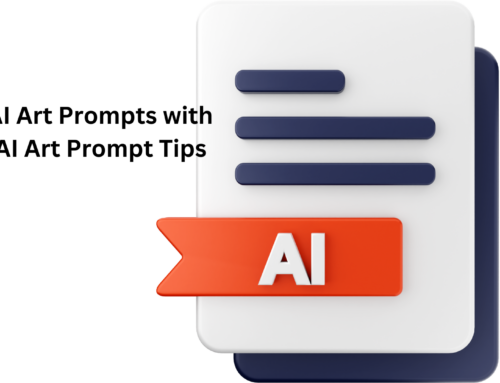In recent years, the world has witnessed a remarkable intersection of technology and creativity with the rise of AI-generated art. This cutting-edge form of artistic expression, powered by artificial intelligence algorithms, has not only captivated the art world but also sparked conversations about the emotional impact of ai-generated art on audiences.

Exploring the Emotional Impact Of AI-generated Art
In today’s fast-paced world, where technology is making remarkable strides, one cannot help but notice the rising influence of AI in various aspects of our lives. One such fascinating area is the realm of art, where AI has begun creating masterpieces known as “ai artwork” or “ai art.” The emergence of AI in art has sparked a lively debate about the emotional impact it leaves on those who engage with it.
When it comes to viewing art created by AI, there is a unique blend of fascination and intrigue. The colors, shapes, and patterns come together in unexpected ways, often stirring stronger emotions than one might anticipate. The question arises: can the sensitivity attributed to the artist be replicated by a machine? Does the emotional connection to art really require a human touch, or can it be just as profound when the artist is an AI?
Exploring the emotional depth of AI-generated art, one begins to ponder the nature of the connection to art. Some argue that the essence of a genuine emotional connection to art really requires a human touch—an artist pouring their feelings and experiences into their creation. On the contrary, proponents of AI in art believe that the emotional impact can be just as profound, challenging the traditional notion that a human-made art piece holds a monopoly on evoking emotions.
Understanding Emotion in AI-Generated Artistry
Imagine computers being like artists, creating pictures that make you feel and think. That’s what AI art makers do. They use smart programs to learn from lots of art made by people and then make their own cool art by mixing up different styles and ways of doing things. It’s like the computer is a super creative artist using its special tricks to paint pictures that touch your heart. Jon Morgan, The CEO and Editor-in-Chief of Venture Smarter, says, “AI art generators evoke emotional responses in viewers by leveraging the power of pattern recognition and machine learning. These algorithms are trained on vast datasets of human-created art, learning to mimic and even innovate upon the styles, themes, and techniques found within these works. The understanding of human emotions plays a crucial role in this process. By incorporating insights from psychology and cognitive science, developers can guide their algorithms to create artworks that resonate with human emotional experiences.
Now, does AI-generated art capture and express emotions in a way that is comparable to human-created art? I believe the answer is both yes and no. Yes, in the sense that AI can mimic the styles and techniques that humans have historically used to express emotion in art. It can generate images that, to the human eye, appear to be full of emotion. However, it’s also important to note that these algorithms don’t experience emotions themselves. They’re not creating art as a form of self-expression or as a way to communicate their inner emotional states. This is where the emotional impact might differ between AI-generated and human-created art. The latter is often valued for its ability to provide insight into the human condition, something that AI, at least for now, cannot fully grasp.
Regarding the ethical considerations of AI-generated art, it’s important to remember that while AI can create powerful and emotionally resonant images, it doesn’t understand the impact that these images might have on viewers. This raises questions about responsibility and consent. For instance, if an AI creates an artwork that triggers a strong emotional reaction, who is responsible for that impact? And how do we ensure that viewers are adequately prepared for what they might experience? These are complex issues that require careful thought and ongoing discussion. As we continue to explore the potential of AI in the art world, it’s crucial that we keep these ethical considerations at the forefront of our minds.”
How AI-Generated Art Challenges Emotional Expectations?
As computers get smarter, they can create art that really tugs at our emotions. Whether it’s a digital painting that grabs your attention, a sculpture that makes you think, or music that captures your feelings, AI art is making us feel things we might not have felt before.
Recent studies exploring the emotional impact of AI-generated art have unveiled intriguing findings. When participants were asked to rate the emotional impact of artworks created by both humans and machines, results showed that participants reported stronger emotional connections to AI-generated artwork. Participants were told that their input would shape the AI-generated art, and the captivating results also reflected the collaborative nature of the creative process. This discovery challenges preconceived notions about the ability of AI algorithms to evoke genuine emotional responses, sparking a fascinating dialogue about the intersection of humans and machines in the world of art.
Moreover, the research delved into the crucial question of whether people perceive emotional depth differently when experiencing art crafted by AI algorithms. The findings demonstrated that participants, when informed that they were viewing AI-generated art, still reported heightened emotional engagement. This suggests a remarkable acceptance and appreciation for the emotional resonance embedded in computer-generated art, blurring the lines between the creations of humans and machines.
In a world where technology continues to shape our perceptions and experiences, the emotional impact of AI-generated art raises thought-provoking questions about the evolving relationship between humans and artificial intelligence. As we navigate this uncharted territory, the synergy between human creativity and AI algorithms presents a canvas of possibilities, challenging us to explore the profound emotions that can be elicited through the fusion of human and machine-generated artistic expressions.

AI Art and the Depths of Human Emotion
Imagine a new kind of art made by super-smart algorithms in computers. These AI art generators can tap into our emotions by studying big sets of data, helping them create pictures that hit you right in the feels. Diana Zheng, Head of Marketing at Stallion Express, highlights, “AI art generators, powered by sophisticated algorithms, trigger emotions by tapping into a deeper understanding of human feelings. These algorithms analyze large data sets to identify and mimic human emotions, making the generated artworks more impactful.
Art created by AI can capture and express emotions just as much as human-made art. The difference lies in the algorithm’s ability to imitate and interpret emotional nuances. The emotional impact is significant but may vary in nuances from human-made art, providing a unique and changing perspective.
Ethical considerations play an essential role. Since AI-powered art elicits powerful emotional responses, there are questions about its psychological impact on people. It is important to balance innovation with ethical responsibility. Transparency, consent, and continuous psychological impact assessment ensure that AI art adds value to people’s lives.”
AI and Human Collaboration in the Future of Artistic Expression
In the world of human-generated art, the authorship of the artwork is undeniably tied to the individual artist. The personal touch, intentions, and emotions woven into the fabric of the visual art form a unique tapestry that resonates with the audience. The debate surrounding the presence of AI in art challenges this traditional perspective, as ai-created art emerges with its own distinctive qualities. The emotions evoked by the artwork become a fascinating exploration of whether the intentions and emotions of a machine can mirror or surpass those of a human artist.
As we delve deeper into the question of whether using AI in art really requires a human artist, the scale of prototypical aesthetic emotions takes center stage. Some argue that the artist’s touch, with its depth of human experience, is indispensable for the true emotional impact of art. On the flip side, there are those who challenge this notion, asserting that the artwork created by AI possesses a beauty and emotional resonance that can stand on its own merit. The distinction blurs further when viewers, unaware of the creator’s identity, initially believed the artist was human, only to discover later that the masterpiece was crafted by AI.
In contemplating whether ai-created artwork could be classified as art in its truest sense, the notion of AI as a necessary element in the artistic process emerges. The evolving landscape of art suggests that, rather than overshadowing the human touch, AI complements and expands the horizons of creativity. The question then becomes whether, in the future, ai would be a necessary collaborator in the artistic realm, contributing to a rich tapestry of human and machine creativity that transcends traditional boundaries.
Emotional Surprises in AI-Generated Artwork
As we explore the role of AI in the arts, an intriguing aspect unfolds when viewers engage with artwork performed by an AI. There are instances where individuals, upon witnessing a captivating piece, were surprised to learn that they thought it was an AI behind the creation. This blurring of lines between what is perceived as traditionally human and the emergence of AI creativity sparks a fascinating dialogue about our stronger sensitivity to the artist.
The ability of AI in the arts to evoke emotions has become a topic of considerable discussion. Some skeptics question the depth of emotional resonance when the artwork is created by a computer. However, participants in the human artist group have shared their surprising emotional responses to pieces they believed were crafted by fellow humans but were, in fact, the result of AI ingenuity. The revelation challenges preconceived notions about the emotions attributed to art and opens up a dynamic conversation about the emotional connection between the audience and AI-generated creations.
In considering the emotional impact of AI-generated art, it’s essential to recognize that, while AI cannot replicate the full spectrum of human emotions, it has its own unique capacity to evoke feelings. The ongoing debate of AI-generated vs. human-generated art raises questions about the role of technology in the creative process. Some artists have embraced AI as a tool to enhance their artistic expression, while others have avoided using AI, fearing it may dilute the authenticity of their work. As we navigate this intersection between technology and creativity, the emotional landscape of art continues to evolve, inviting us to rethink and redefine our understanding of artistic expression in the digital age.

Creating Authentic Art with Airbrush AI
Imagine Airbrush AI as your artistic companion, a tool that breathes life into your textual descriptions, transforming them into visually stunning artworks with the finesse of a seasoned artist. This ingenious text-to-image generator is powered by sophisticated artificial intelligence algorithms (AIS), adding a touch of magic to your creative journey. What sets Airbrush AI apart is its ability to evoke emotions through authentic-looking results. As you explore the versatile styles it offers, each artwork becomes a unique expression of your imagination.
Features and Benefits of Airbrush AI:
- Versatility in Styles: Airbrush AI employs advanced algorithms that allow users to experiment with various artistic styles, producing a diverse range of artwork from a single text input.
- Authentic-Looking Results: The tool’s unique ability to create authentic-looking artwork ensures that each piece appears genuine and visually appealing, adding a touch of realism to AI-generated images.
- Emotional Immersion: Users report a heightened emotional experience while viewing each artwork, demonstrating the tool’s capability to evoke a sense of connection and engagement with the generated visual content.
- User-Friendly Interface: Airbrush AI provides a user-friendly platform, making it accessible to both novices and experienced users, facilitating seamless interaction and creative expression.
- Consistent Quality: The tool consistently delivers high-quality results, maintaining a standard of excellence across different artwork genres and ensuring a satisfying experience for users exploring the possibilities of AI in visual art creation.
Wrapping Up the Narrative of Artificial Intelligence in Art
In conclusion, the emotional impact of AI-generated art has sparked a rich tapestry of conversations within the field of art. As participants attributed stronger sensitivity to the artist, one cannot ignore the transformative power of AI in shaping our emotional experiences with art. Whether it’s art that was computer-generated or a piece that seamlessly blends human and AI creativity, the potential AI authorship adds a layer of complexity to our understanding of emotions in the context of art. As we consider that AI, including specialized types like the AI music transformer, can generate artworks with remarkable precision, the exploration of emotional depth in this new era of creativity becomes both exciting and thought-provoking. The evolving landscape invites us to embrace the synergy between human and AI, fostering a harmonious collaboration that expands the boundaries of artistic expression and enhances our emotional connection with the art of the future.






Leave A Comment